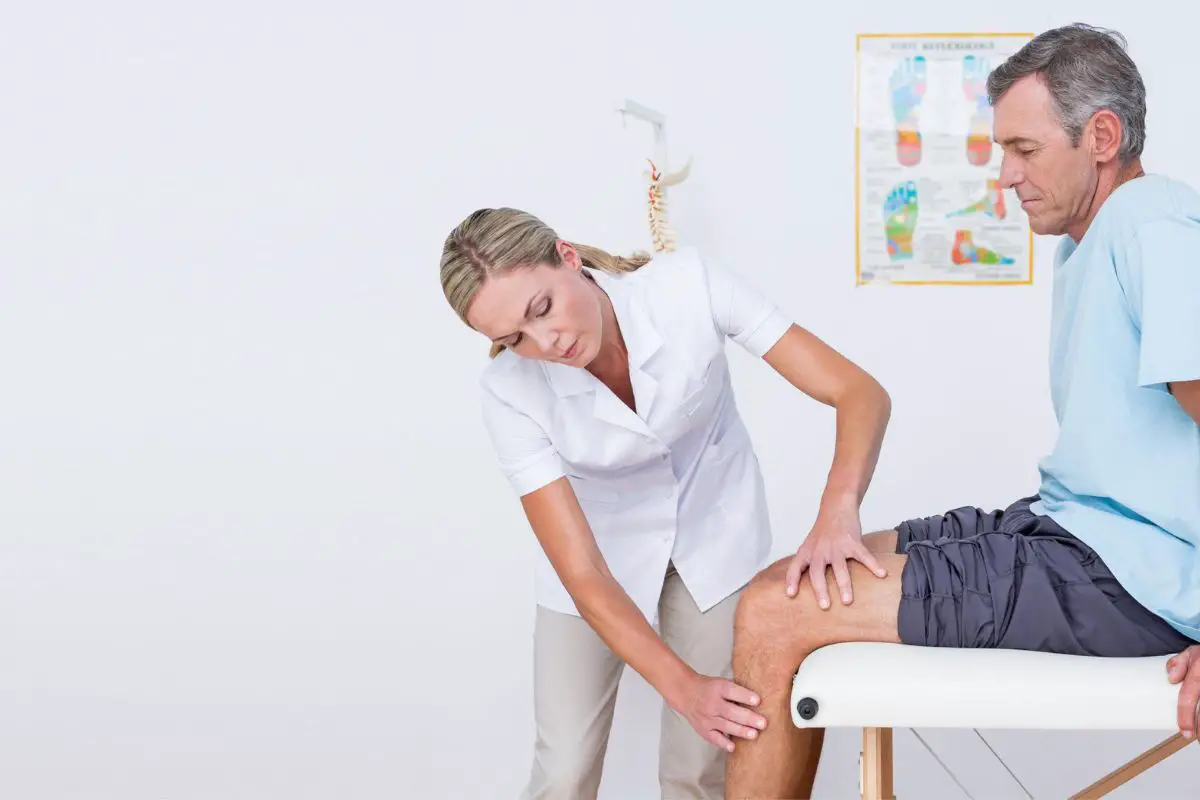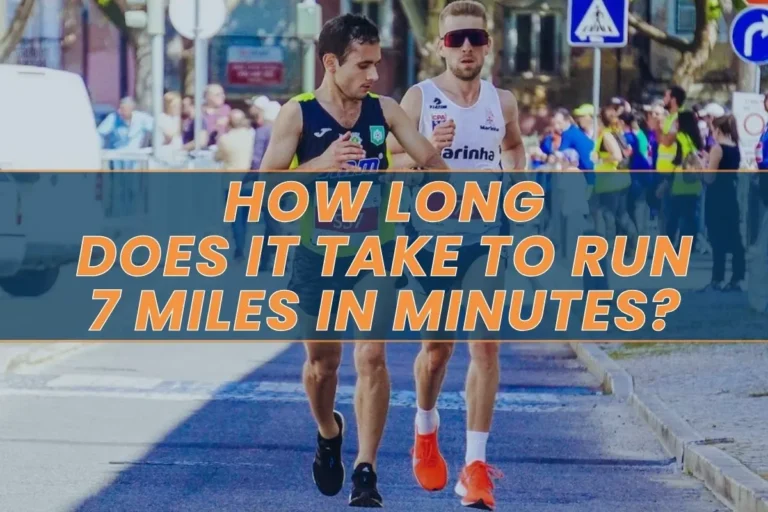Can You Run after Knee Replacement? 4 Basic Safety Tips
Are you a runner living with knee pain? Did you know that knee replacement surgery is one of the most common solutions that can offer relief for chronic pain? But can you run after knee replacement?
In this blog post, we will discuss the impact that running has on your knees after undergoing a knee replacement surgery. We will also provide safety tips to help protect your new implant when returning to running activities. If you have had a surgery or are considering it, learn whether returning to running is an appropriate option for you.
Let’s explore how to safely return back to running!
Is Running with Knee Replacement Safe For You?
Can you run after knee replacement? In general, running after knee replacement may bring physical, cardiovascular, and mental health benefits. It is important to consult with your doctor before getting started with any activity post-surgery. Gradual activity increase and proper rehab exercises will help to keep you safe while running.
The Problem of Knee Replacement for Runners
Physicians sometimes recommend knee replacement surgery for runners who experience chronic pain, swelling, and a decrease in range of motion.
Knee injuries, joint degeneration, arthritis, and ligament damage are the most common causes leading to knee replacement surgery among runners. Due to their high-impact activity on their feet and knees while running, athletes endure higher risks of developing complications which require surgical intervention. They often experience problems such as cartilage deterioration, patellar dislocation, meniscus tears, osteoarthritis (OA), rheumatoid arthritis and even patellofemoral pain syndrome (PFPS).

There are two types of knee replacements: partial and total. Partial knee replacement replaces only the damaged part of the knee joint, while a total knee replacement replaces the entire joint with artificial components. Both types can help to restore leg function and lower pain levels in those with moderate-to-severe knee problems.
Is It Possible to Return to Running after Knee Replacement?
So, can you run with a knee replacement? Depending on the type of implant and whether your doctor approves it, you may be able to resume easy-pace running as soon as 4-6 months after partial knee replacement surgery and 9-12 months after total knee replacement. Let’s discuss the details:
1. Running after Partial Knee Replacement
After partial knee replacement, running is possible with some safety precautions. Generally, doctors recommend waiting at least 4-6 months after a knee replacement before beginning any physical activity including running.
However, many patients who weren’t running prior to the surgery can begin within 1 year after surgery and benefit from reduced pain levels without risking further damage to the joint.
2. Running after Total Knee Replacement
Thinking of returning to running after having a total knee replacement? For many people, running can seem impossible following the surgery– but it doesn’t have to be that way.
It may take 9-12 months before you are ready and fully able to return to running after a knee replacement. While there are potential benefits, including improved bone density, there are also risks that should never be overlooked.
3. Will Running Wear out My Knee Replacement?
The short answer to this question is yes, running can potentially wear out your knee replacement. However, depending on the type of knee replacement and individual circumstances, some people with a total or partial knee replacement may be able to safely return to running.
The effects of total knee arthroplasty (TKA) on the body may impact your ability to run normally afterwards. Even with the most advanced implants designed for athletes and their demanding activity levels, there will be some limitation in stability compared to healthy knees.
Pros of Returning to Running after Knee Replacement
Patients who return to running after joint replacement surgery enjoy various advantages:

1. Improved Bone Density and Muscle Strength
Running after knee replacement can lead to improved bone density and muscle strength, which is a great benefit for runners. Practicing aerobic exercises following surgery increases the mineral content of both cortical and trabecular bones, reducing the risk of fractures.
Additionally, regular running helps build strong muscles that can carry out daily activities efficiently without straining other joints or risking injuries.
2. Cardiovascular Benefits
Running with knee replacement offers immense cardiovascular benefits when done properly in accordance with medical advice. Running regularly increases your heart rate and strengthens the muscles that make up the respiratory organs, such as the diaphragm, thus improving breathing efficiency.
3. Mental Health Benefits
Running and other active pursuits are powerful tools to reduce stress, depression, mood swings, and anxiety. It improves overall mental stability by providing a sense of purpose which runners greatly appreciate when they return to competitive sports after their recovery period.
Moreover, running can break the monotony of limited mobility in long-term isolation due to injury or surgery such as knee replacement. It affects people psychologically in far more ways than just being physically productive.
Subscribe to Our Running Newsletter!
Get free running tips from renowned professional athletes and discounts from top-notch brands.
Potential Risks of Running after Knee Replacement
Though running brings various physical, mental, and emotional health benefits, you should also consider the potential risks:
1. Increased Wear on Artificial Joint Surfaces
While researches show it can take some time before athletes can safely return to running, there hasn’t yet been any conclusive evidence that definitively states that running accelerates the rate at which these joint surfaces wear out.
However, many sources suggest caution and careful consideration prior to attempting any high-impact runs if you have had recent surgery. In addition, most medical professionals recommend listening closely to your body when taking part in such activities. Limit yourself from undertaking too strenuous exercises while recovering from both partial and total knee replacement surgeries.
2. Risk of Loosening or Dislodging the Joint
Running after knee replacement surgery can pose a risk of loosening or dislodging the joint, particularly since running is an activity that involves high-impact movements. As artificial joint surfaces can support only a certain amount of wear and tear before weakening, such high-impact exercises could potentially increase it while also weakening the surrounding tendons and ligaments.

Pro Tip:
However, there are steps you can take to reduce your risk. Rehabilitation and strengthening exercises should be done prior to any running activity in order to strengthen the stability around the new joint.
3. Need for Future Surgeries
After a knee replacement, there is an increased risk of long-term complications that require further surgeries. Running can put added strain on artificial joints and may lead to accelerated wear and failures in joint components over time.
As such, running with knee replacement can increase the possibility of re-operation or surgical reconstruction if adequate precautions are not taken. Therefore it’s important to follow your rehabilitation program and listen to your body when running with a new knee so as not to exceed what your joints are capable of enduring.
How to Start Running after Knee Replacement?
It’s important to start slow and take the proper exercises into consideration when running after knee replacement. Here are the 3 basic recommendations:
1. Gradual Increase in Activity
How long after knee replacement can you run? Returning to running requires a gradual increase in activity. This is important to allow for the joint to properly heal and strengthen gradually, ensuring that it can withstand the increased stress of running.
2. Proper Rehabilitation and Strengthening Exercises
When it comes to returning to running after knee replacement surgery, proper rehabilitation and strengthening exercises help restore muscle strength and mobility in the operated joint. It increases range of motion, which could otherwise be hindered due to greater release or trauma experienced during the procedure.
Examples of such exercises for runners include targeting flexion, extension, abduction, and adduction. In addition, muscular rehabilitation should focus on restoring quadriceps and hamstring strength. Try to balance training in order to support increased stability at the ankle and progress from static to dynamic exercises.
3. Consulting with Your Doctor or Physical Therapist
When considering running after knee replacement, it is important to first seek professional advice from your doctor or physical therapist. They can provide personalized treatment and advice based on your specific medical condition and benefits that you would gain from returning to running.
With their guidance, you can assess the stability of the joint, strengthen the muscles around it, and progress through a rehabilitation plan safely.
When Is It Impossible to Return to Running after Knee Replacement Surgery?
It may be impossible to return to running after knee replacement surgery depending on individual factors, such as age, overall health, and type of knee replacement performed.

For instance, younger patients who are undergoing a total knee replacement may not be able to gain an appropriate speed for running activities due to potential risks. Alternatively, those undergoing partial replacements can typically resume some high-impact activities with caution.
Finally, older patients should likely avoid high-impact exercise completely because there is simply too much wear-and-tear on aging joints over a long period. It can put further strain leading up to another surgery.
Alternatives to Running after Knee Replacement
For those who are unable to resume knee replacement running, other activities can be used in place of running for cardiovascular health benefits.
1. Aerobic Activities
Aerobic activities are a great way for runners who have undergone knee replacements to stay fit while avoiding further damage to their artificial joint surfaces.

Pro Tip:
Such exercises can include cycling, brisk walking, swimming, playing doubles tennis, or taking part in other low impact sports.
They also provide similar cardiovascular benefits as running without exposing the affected knees to excessive levels of strain and pressure.
2. Strength and Balance Work
Strength and balance workouts are essential parts of a post-surgery knee replacement program. Such exercises can help increase strength in the quadriceps, hamstrings, hip flexors, abductors, and adductors. This can improve stability around the hip and knee joint by helping to reduce the risk of further injury. Regular strength and balance training also helps promote healthy alignment of the muscles, which is key for a healthy run after knee replacement surgery.
Frequently Asked Questions about Running after Knee Replacement
Can You Jog after Total Knee Replacement?
It is possible to return to jogging after total knee replacement, but it is important to do so with care and caution. Most doctors suggest waiting at least 6 months before jogging after knee replacements in order to give the joint time to become stable and heal properly.
Is It OK to Run with a Knee Replacement?
Running with a knee replacement is possible. However, it is important to understand that running after knee replacement can carry risks such as increased wear on the artificial joint surfaces and potential loosening or dislodging of the joint.
Can You Run After Double Knee Replacement?
Whether it’s a partial or double knee replacement, you should follow all post-surgery instructions given by your doctor closely during rehabilitation. Some doctors don’t recommend running after double TKR, but there is a possibility to resume running after a full recovery.
Final Thoughts on Running after Knee Surgery
Running after a knee replacement requires close supervision and guidance from surgeons, physical therapists, and healthcare professionals. Generally speaking, it is considered safe to return to running after a knee replacement if done under the right conditions.
It is important for runners to understand that there are both risks and benefits associated with returning to running post-surgery. You should consult with a qualified professional before attempting it at any level of intensity or duration.
Additionally, those who have undergone knee replacement surgery may find alternative activities, such as cycling or swimming, which offer significant cardiovascular benefits while avoiding high-impact sports that can damage your joint implant over time.
Do you have any experience in running after knee surgery? Please share your story in the comments below.
Also Read:
- How to Prevent Muscle Cramps While Running
- Best Running Shoes For Forefoot Strikers
- Why Do My Lungs Hurt After Running
- Best Running Shoes For Overweight Women
- Will Running Give Me a Toned Body
- Best Running Shoes For Haglund’s Deformity
- Benefits of Running on an Empty Stomach
References:
- Elena Zaballa, E. Clare Harris, Cyrus Cooper, Catherine H. Linaker, Karen Walker-Bone, “Risk of Revision Arthroplasty Surgery after Exposure to Physically Demanding Occupational or Leisure Activities: A Systematic Review.” PLoS One 17, no. 2 (2022): e0264487, https://doi.org/10.1371/journal.pone.0264487.
- Laura A. Vogel, Giuseppe Carotenuto, John J. Basti, William N. Levine, “Physical Activity after Total Joint Arthroplasty.” Sports Health 3, no. 5 (2011): 441-450, https://www.ncbi.nlm.nih.gov/pmc/articles/PMC3445215/.
- Marco J. Konings, Henri De Vroey, Ive Weygers, Kurt Claeys, “Effect of Knee Arthroplasty on Sports Participation and Activity Levels: A Systematic Review and Meta-Analysis,” BMJ Open Sport & Exercise Medicine 6(2020): e000729, https://bmjopensem.bmj.com/content/6/1/e000729
- Maryke Louw, “Can You Run after a Knee Replacement?” Sports Injury Physio, https://www.sports-injury-physio.com/post/can-you-run-after-a-knee-replacement (accessed October 25, 2023).
- Yvet Mooiweer, Martin Stevens, Inge van den Akker-Scheek, PAIR study group, “Being Active with a Total Hip or Knee Prosthesis: A Systematic Review into Physical Activity and Sports Recommendations and Interventions to Improve Physical Activity Behavior,” European Review of Aging and Physical Activity 19, no. 7 (2022), https://doi.org/10.1186/s11556-022-00285-1
If you have any questions or suggestions, you can contact us via email – [email protected]






